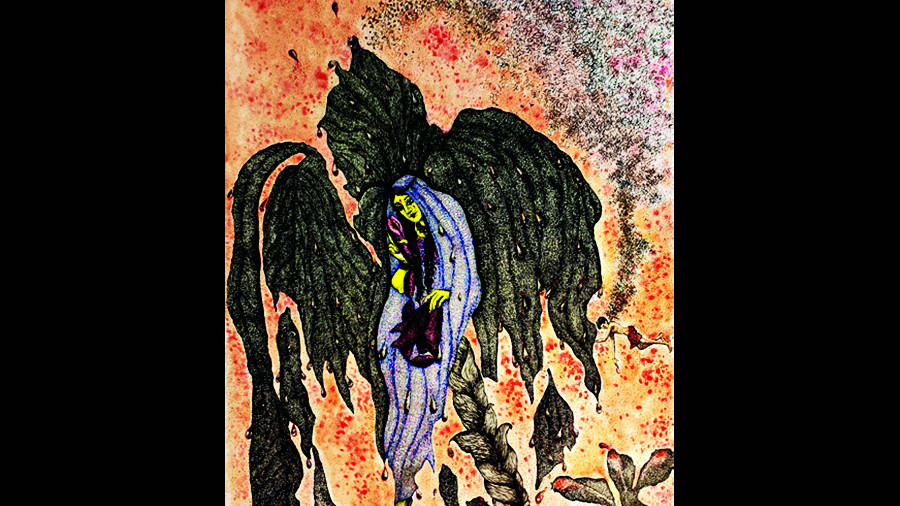If Alice were to step out of Wonderland now, she’d find herself in Nirbhaya’s world, where little girls are fair game for predators.
A world dominated by scenes that provoke one response or rasa, says Chandrima Bhattacharyya in her note on her recent online show, Mementos from Moments, hosted by Ganges Gallery: the Bibhatsa rasa, meant to evoke horror and revulsion at once.
Bibhatsa for many reasons, primary among which, she feels, is the “undercurrent of menace” that stalks helpless girls. That is why the first image the artist offers is of Alice, but with a grown-up’s watchful face.
Instead of a flamingo-mallet tucked under her arm — which makes bird lovers recoil in any case — she carries the terror-stunned figure of Munch’s Scream. The merging of allusions sums up the loss of Eden for little girls — and for many little boys, too — that begins with the predatory gaze as a preface to acts of brutality refined with a sadistic imagination.
Woman is the protagonist in this series, symbolized by Bharatmata, Ailing and Abandoned (picture), no longer an inspiring icon. Rather, the limp figure, wilting like dying leaves, conforms to the apologetic, shrinking, acquiescing femininity approved by the tradition in which the ideal woman is a silent homeworker without voice and volition. The contemporary woman, more than a century later, must yet contend with acid attacks, home imprisonment, voyeurism, overbearing patriarchy, suggests the artist. Lost in brooding contemplation, she is unable to soar because, In the Garden of the Phoenix, entrenched mores refuse to die.
Bhattacharyya’s surreal format has a catchy appeal: the receding space, the floating staircase, the chequered floor, the scramble of perspectives and scales. At times, however, the imagery gets overheated, as in Avenger and the Demon Kings. But when it’s nostalgic romanticism, as in Under the Papaya Tree, a persuasive, endearing vulnerability emerges.
In conclusion, one question does arise, though. When such acts of piety as stoning, burning and chastity tests in fire are sanctioned by tradition, can societies be anything but shock-proof?










